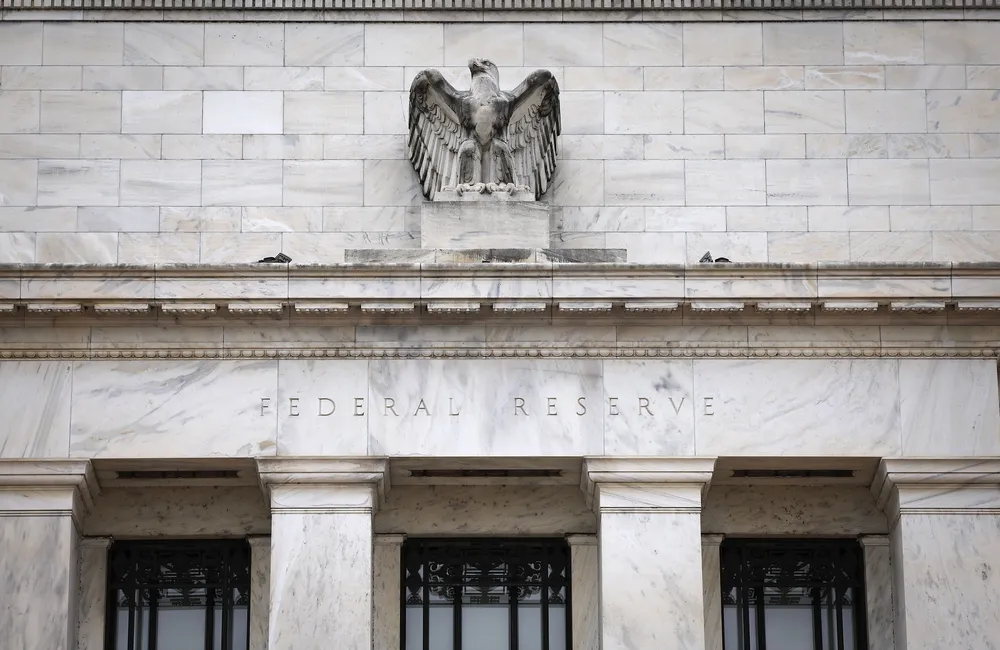ASX futures had risen 50 points or 0.7 per cent to 6959 near 8.00 am AEST, pointing to a positive start to trade.
US stocks rose Tuesday in a volatile trading session as investors balanced a recent flurry of strong earnings results against ongoing uncertainty about the impact of higher interest rates this year.
The S&P 500 gained 0.7 percent, rising for a third day in a row. The blue-chip Dow Jones Industrial Average and the technology-rich Nasdaq Composite each rose 0.8%.
Locally, the S&P/ASX 200 ended a volatile session up 0.5% at 7006.0 boosted by a jump in tech and financial stocks.
The benchmark had fallen into negative territory early, bounced as much as 1.0% higher before easing. It ended above the 7000-point level for the first time in five sessions.
The tech sector soared 2.4 per cent, with Appen the biggest ASX 200 mover after Citi kept its buy rating on the stock and it surged 7.9 per cent.
Heavyweight financials surged, rebounding from Monday’s selloff after the Reserve Bank of Australia left the cash rate unchanged and ending its quantitative-easing program.
Commonwealth Bank, Westpac, NAB and Macquarie gained between 0.2% and 2.7%.
Abroad, the pan-continental Stoxx Europe 600 gained 1.3 percent. In Asia, markets in Hong Kong and mainland China were shut. Japan’s Nikkei 225 rose 0.3%.
In commodities, gold futures added 0.3% to $US1801.40; Brent crude added 0.2% to $US89.41; Iron ore unavailable due to Lunar New Year holidays.
In bond market the Australian 10-year bond yield rose to 1.90 percent, while the US 10-year Treasury yield was unchanged at 1.79 percent. Yields fall when prices rise.
The Australian dollar recovered from last week’s trough to fetch 71.23 US cents at 8:00 am AEST, rising from the last close of 70.68. The WSJ Dollar Index, which measures the US dollar against 16 other currencies, fell to 89.96.
Asia
Chinese and Hong Kong share markets are closed for the Lunar New Year holidays.
The Japanese Nikkei Stock Average gained 0.3%, following higher Wall Street overnight. TDK rose 11.2% after raising its views of revenue and net profit for the fiscal year. NEC jumped 11.0% after raising its forecast for fiscal-year net profit. Shionogi & Co. rose 10.3% after reporting promising data from a Phase 2a trial of its coronavirus pill. Seven & i Holdings added 4.4% on a report it aims to divest its department-store business.
Europe
European shares ended with solid gains as investors took encouragement from officials’ more dovish commentary on monetary policy at the US Federal Reserve. The pan-European Stoxx 600 added 1.3%.
“European markets have had a solid start to the new month after yesterday’s push-back from a number of Federal Reserve officials, who rained cold water on some of the hawkish narratives that had been coming out in relation to the timing of Fed hikes,” analyst Michael Hewson of CMC Markets says.
In London, the FTSE 100 climbed 0.8 percent in what was a strong start to February.
“Amongst the best performers we are seeing some decent gains amongst the basic resource and banks, with the likes of Rio Tinto PLC, Glencore PLC, and Anglo American PLC near the top of the pile, while HSBC Holdings PLC and Lloyds Banking Group PLC are also doing well,” says Hewson.
North America
US stocks inch higher after a choppy trading session Tuesday as investors weighed the recent run of strong earnings results against continued uncertainty about how much higher interest rates will be this year.
The S&P 500 gained 0.7 percent, rising for a third straight session. The blue-chip Dow Jones Industrial Average and the technology-heavy Nasdaq Composite both rose 0.8%.
Stocks started February on an unsteady foot, continuing some of the anxiety that has defined markets in 2023 so far. The S&P 500 wrapped up January on Monday with a 5.3 percent decline, its biggest since March 2020. The Nasdaq plunged even more, down 9%.
At the root of the selloff was increasing angst among investors about how the US stock market will fare as monetary policy tightens. The Federal Reserve signaled last week that it would start raising rates in mid-March, prompting traders to shuffle their portfolios. Many sold shares of highflying growth companies and migrated to stocks and funds that seemed less risky, like dividend stocks.
A new month has brought new earnings reports and economic data for investors to parse. Traders also say they’re continuing to focus on how to position portfolios to prepare for higher interest rates down the road.
“We have relatively good economic conditions as far as extremely high GDP growth and a strong labour market and consumers and companies with strong balance sheets,” said Chris Zaccarelli, chief investment officer for Independent Advisor Alliance. “But you have those large headwinds of the Federal Reserve raising rates and shrinking [its] balance sheet. I think investors are figuring out what's a good level to buy some dips but also to ensure that they are buckled up for possible volatility ahead.”
Mr. Zaccarelli said his current preference was to reposition into higher-quality companies boasting strong profitability. He has identified opportunities in sectors such as financials and energy, he said.
Money managers say they are scrutinizing earnings for indications on how companies are managing inflation- and supply-chain-related problems. Some earnings have been out this week, and they have been strong. ExxonMobil rose 6.5 percent after it announced $23 billion in profit for 2021, its highest total since 2014.
United Parcel Service’s shares climbed 14 percent after the company said its quarterly profit had increased. US-listed shares of Switzerland’s UBS Group climbed 9% after the bank raised its financial goals and said it had the firepower to repurchase as much as $5 billion of shares this year.
“One of the themes of this year was earnings was going to be a big driver of the market,” said Keith Lerner, co-chief investment officer at Truist Advisory Services. About 77% of S&P 500 companies that have reported results so far have exceeded earnings-per-share targets, according to FactSet data early Tuesday afternoon.
US manufacturing activity slowed last month, according to data released Tuesday. The Institute for Supply Management's Manufacturing Report on Business PMI slid to 57.6 -- a reading above 50 indicates expansion -- in January from 58.8 in December. The report found that the Covid-19 Omicron variant and supply-chain obstructions were among the factors that crimped activity.
A separate report from the Labor Department showed hiring and the number of worker resignations slowed in December compared with the previous month.
Energy stocks gained the most of the S&P 500’s 11 sectors Tuesday. Shares of industrials and materials stocks also soared.
Mega Cap tech stocks, meanwhile, were mixed. Microsoft fell 0.7% and Netflix gained 7%. Tech stocks struggled through the selloff in January as climbing interest rates threatened to drag down their high valuations, based on bets on growth far in the future.
“Tech went into the year very, very expensive, which made it all the more vulnerable to rising rates,” said Seema Shah, chief strategist at Principal Global Investors. “Understandably that’s why it has had that selloff, but with tech you have to be a long-term investor and think about the trends moving forward.”

























